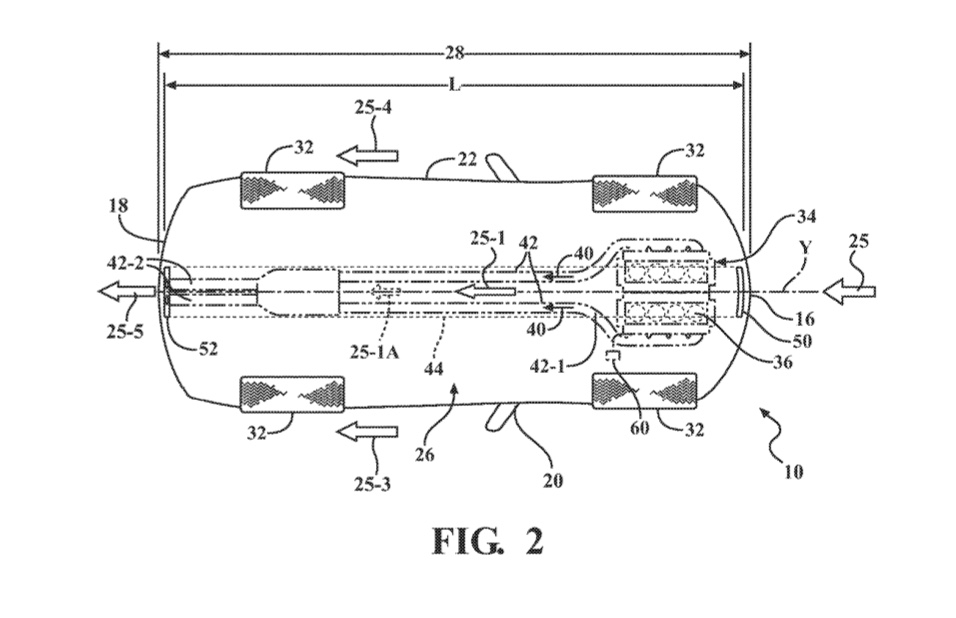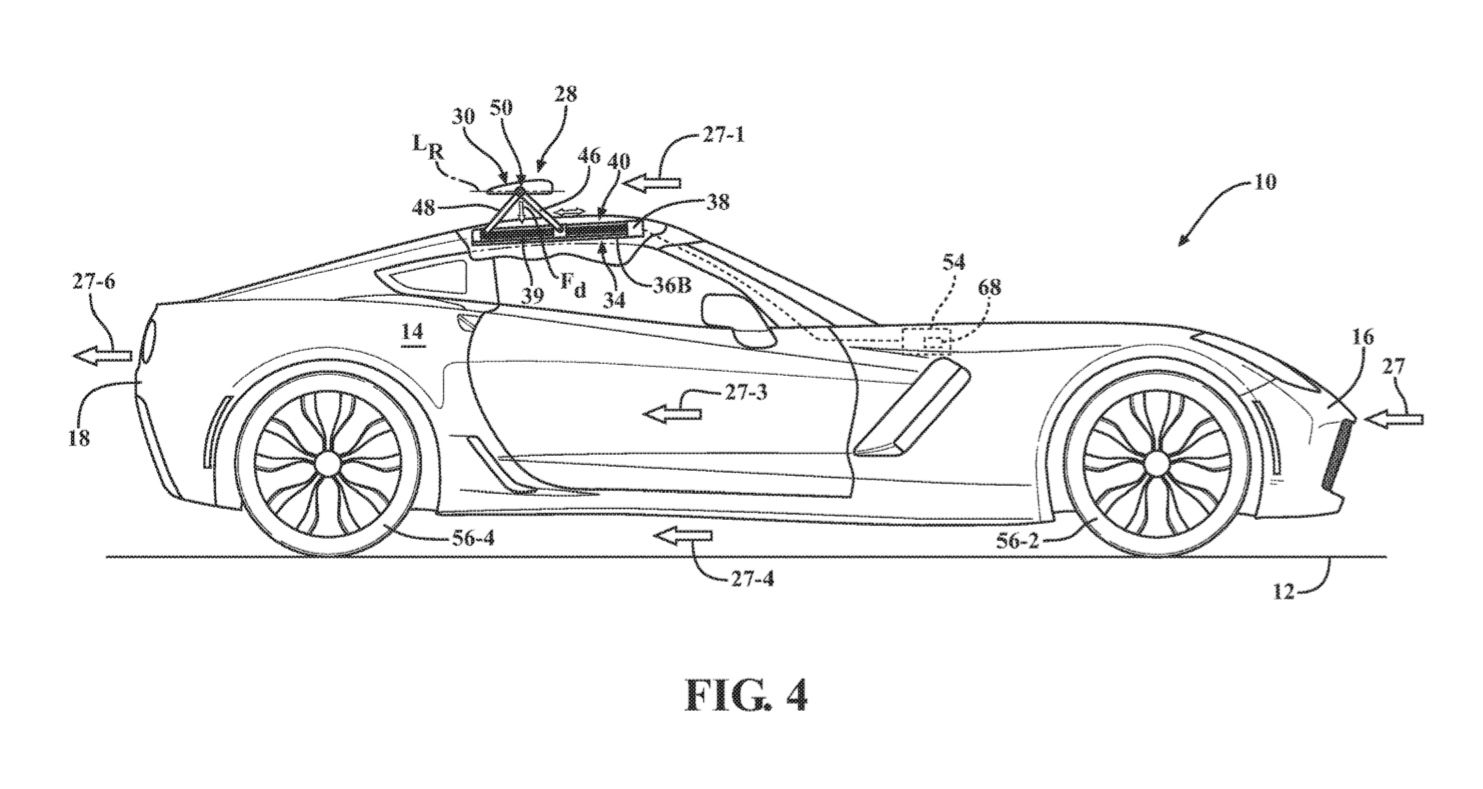Active aero patents for Corvette suggest Chevy is getting tricky with downforce
GM attorneys have been busy between coffee breaks patenting technology that may come in handy for the 2020 Corvette, which is due to break cover in a few months. The four patents earned between July 2017 and August 2018 define ways to control the Corvette’s ride height, adjust side-skirt height, manage both the height and the angle of a rear wing, and to vary internal air ducts to optimize both downforce and drag.
Grand Prix designers began testing their race cars in wind tunnels in the 1930s. In the 1960s, Chevrolet R+D and Chaparral Cars demonstrated the potential of optimizing under-car air flow with ground effects. While the truly creative means of achieving speed through active aerodynamics have been banned from racing for decades, nothing stops road car manufacturers from conniving airflow to their advantage.
Thirty years ago, Porsche demonstrated what could be done with a clever rear spoiler for the 911 Carrera 4 that automatically hinged 30 degrees into the air stream to diminish rear-axle lift while doubling engine air flow. Since then makers have employed active flaps, shutters, spoilers, and wings to their advantage. Lamborghini’s Aerodinamica Lamborghini Attiva (ALA) system launched last year for the Huracan V-10 Performante uses a computer controlled front splitter and rear wing to benefit acceleration, cornering, braking, and top speed.

Chevy’s new Corvette ZR1 dips a toe in these waters by offering two adjustable rear wings. The low version, intended for road use, allows a remarkable 212 mph top speed. The high version, included with the ZTK track performance package, clips 10 mph off top speed, but the 950 pounds of downforce it produces (in conjunction with an aggressive front splitter) makes it the clear choice for track use.
GM’s patent 971394782 specifies use of laser, ultrasonic, and accelerometer sensors to monitor vehicle dynamics and the ride height at both ends of the car. Any desired assortment of spoilers, wings, air dams, and shutters can then be adjusted by electric motors and/or actuators to improve traction, high-speed stability, and cornering grip. A control computer monitors the sensors to determine the myriad aero-aid settings.



Knowing the precise relationship between the car’s body and the road set the stage for GM’s active side skirt patent 9994267. Similar in concept to the vertical air deflectors fitted to semi-truck trailers, side skirts positioned between the Corvette’s wheels discourage air from striking the rear tire treads and flowing under the car. Controlling their height maximizes their effectiveness at speed while preventing them from dragging over humps and bumps in town.


Patent 10029746 explains how powertrain and interior cooling air flow can be optimized to suit widely varying conditions. Changing the size of inlet and exhaust ports allows sufficient flow during high-load situations and diminished flow during cruising to minimize aerodynamic drag, lift, and interior noise. This patent also states that duct work can be located at the top and bottom areas of the body and fitted with venturis to accelerate air flow.


The fourth patent, 10035548 issued at the end of July this year, covers what GM calls “active spoilers.” Since they’re airfoil shaped and allow air to flow over their top and bottom surfaces, these devices are more commonly called wings. Illustrations show them located both atop the roof and just behind a C7 Corvette’s hatch. Computer-controlled actuators move this aero aid fore and aft, while a system of motors and gears varies the angle of attack into the air stream.



This last technology could easily improve the C7 ZR1’s performance. The higher cost and weight of the new hardware probably won’t make obsolete the two wings currently in production, but it would at least give Corvette customers a third choice—and always-desirable bragging rights.
The $64,000 question is how much of this tech will show up on the mid-engine C8 Corvette. Our educated guess is none. Relocating the engine and a revolutionary exterior will drive Corvette fans to the near-coronary stage without any subtle technicalities. In subsequent model years, after the boiling pot has cooled a bit, the new active aero systems can be implemented as needed to keep Corvettes fresh and fast as far as the mind can imagine.








